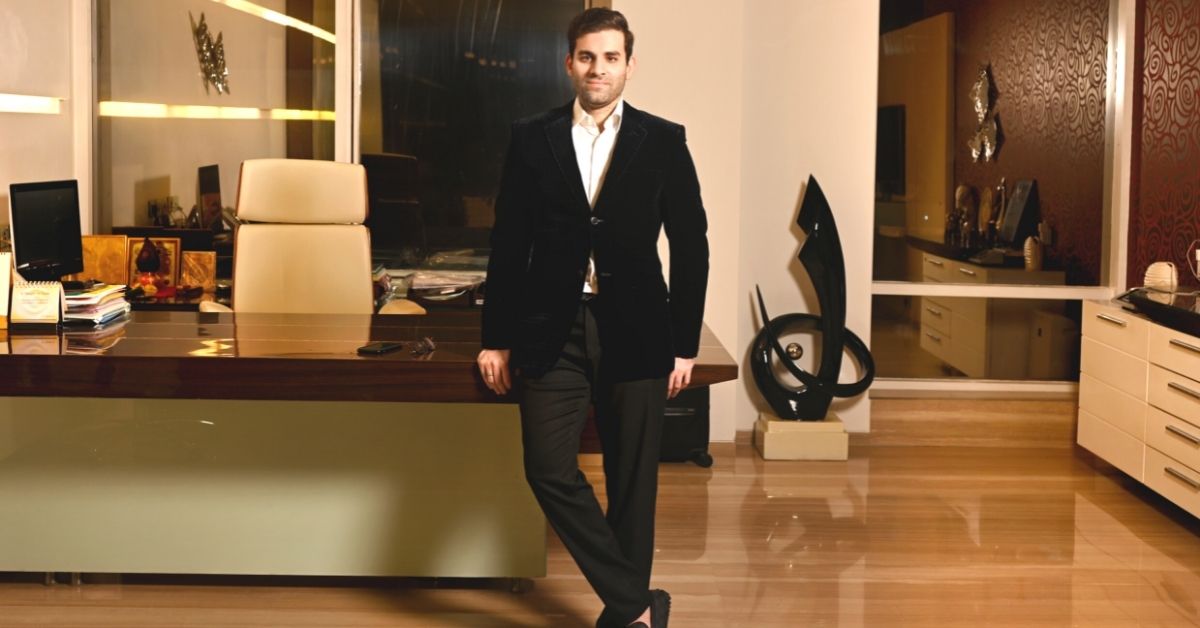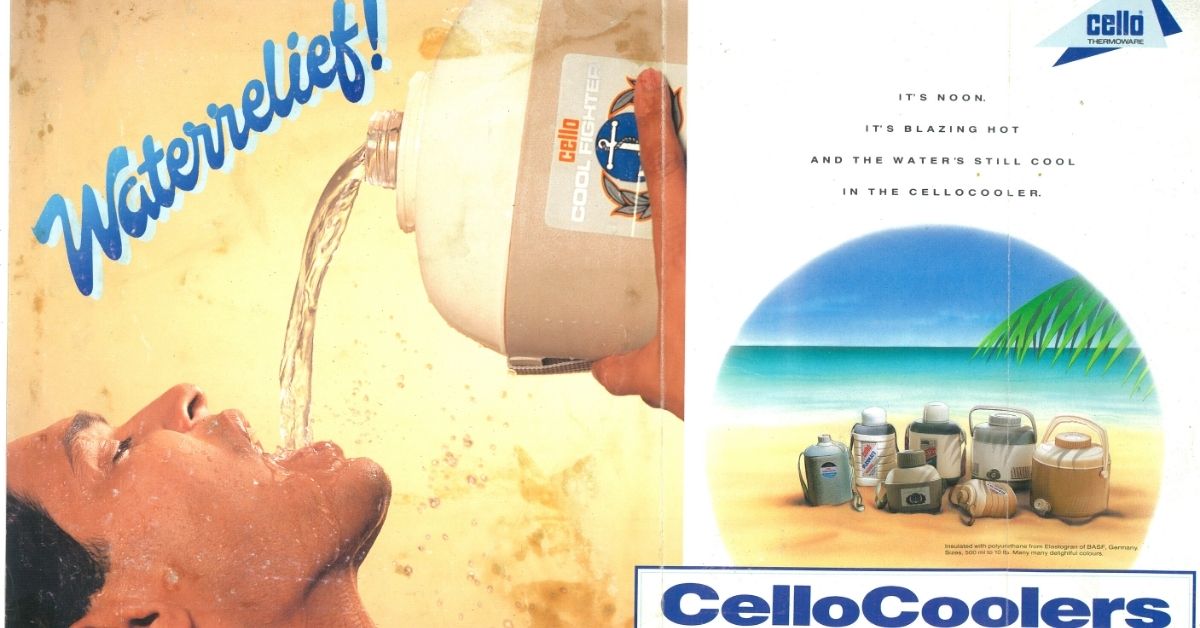How Cello Created a Rs 1,500 Cr Empire By Introducing Casseroles to Indian Kitchens
Cello Group enjoys a significant market share today. But not many might know it had humble beginnings with Polyvinyl Carbonate (PVC) footwear and bangle manufacturing unit in Goregaon, Mumbai, in 1967.

When I was studying in the United Kingdom in 2016, I was perplexed by my friend’s request. She was uncomfortable using the pens from the shops on our university campus and insisted on buying an Indian brand, but could not find any.
“Usi se mera handwriting acha ayega [That’s the only pen brand that will enable me to write well]” — she was talking about the Cello gripper.
She was so adamant that we ended up couriering the pens from India. It was then that I realised the power of a brand.
In another instance, Pune-based Soumitra Khanwelkar, who has a vivid memory of the Cello water bottle, tells The Better India, “I remember my parents carrying a water bottle with the cap that had a slim steel chain attached to its body that prevented it from falling off. The water bottle accompanied us during all our long train journeys and road trips.”
Today, Cello Group enjoys a significant market share but not many might know it had a humble beginning with a Polyvinyl Carbonate (PVC) footwear and bangle manufacturing unit in Goregaon, Mumbai, in 1967. Back then, it had seven machines and 60 workers.
Over the years, the company has diversified into a range of 1,700 products in various categories, making it one of the biggest brands in India. Currently, the company with a 50,000 retail network has 6,000 employees and clocks a revenue of Rs 1,500 crore per annum.
Leaving Its Mark Across Generations

Speaking with The Better India, Gaurav Rathod, the third generation entrepreneur in the family-run business, says that his late grandfather Ghisulal Rathod ventured into the plastic business. “Plastic products were gaining popularity in every household. The steel, brass and other items were heavy and unreliable, depending on their quality and cost. On the other hand, the plastic products were lighter, cheaper and more durable,” he says.
Gaurav says that along with footwear and bangles, it produced plastic items for other companies. However, it was only in the 1980s that the business scaled up and started diversifying its product range.
“My grandfather was working with different partners and the business was unorganised. Moreover, considering the huge market demand, he felt the need for expansion. He thought that instead of manufacturing products for other companies, he should create an individual brand. So, he bought a small plastic company in the city and coined the term ‘Cello’,” the 33-year-old adds.
Cello became popular for its flagship products of casserole dishes. “My grandfather learned about them during his trip to the USA. He saw how Americans stored food in small round-shaped plastic containers that remained warm for hours. He realised that the product suited Indian lifestyle and launched it in India in the late 1980s,” he says, adding that it was probably the first plastic product to enter the Indian kitchen.
In the 90s, the company diversified into plastic moulded furniture and later evolved into different segments such as steelware, glassware, kitchen appliances, melamine and cleaning products.
Gaurav explains the reason for diversification is that the company originated by adapting to the demands of the customers and is constantly evolving even today.

“It was my uncle who realised that pens made from 90 per cent plastic could be explored as a product for better opportunities in the market. Deeming it as a lucrative business, he launched products that found its place in the stationery kits of the students,” he proudly says, adding that the products such as Cello gripper, Cello fine grip, Cello maxwriter, and Cello butterflow became names to reckon with for students. In 2009, the company sold its wing to Bic.
In the early 2000s, the company sensed the customer behaviour inching towards steel. It then blended steel and plastic to sell steel flasks and bottles. “Suddenly, steel was back in trend, and so we created a ‘cross product’ with new designs and looks. The customers widely accepted products like bottles, jars, casseroles, lunch packs, which had steel within and were insulated with an outer layer of plastic,” he says.
Eventually, the company created its space in non-stick cookware, pans, grills, toasters, coffee makers, grinders, blenders, kettles and more. “The 60-year-old group has become one of the most recognised brands in the country, as every Indian household has probably at least one Cello product in their home. We have touched across all demographics and generations,” he adds.
Cello entered into newer segments such as glassware in 2014 and opal ware during 2017. It also exports 15 per cent of its products to countries in the Middle East, Europe and South America.
‘Diversification Helps a Brand Sustain’

“The continuous evolving of the brand also helps it survive through challenges,” he says. Citing an example, Gaurav says that during the COVID-19 pandemic, the sale of cleaning equipment such as mops increased by 100 per cent. “It is because we existed in the category the company could benefit from the sales. Such diversification has helped the company sustain even today,” he says.
Gaurav notes that, say, out of the 10 products manufactured by the company, only three might take off, but those products are enough to support the enterprise. “For example, our recent Cello Puro water bottle became a hit as the size, price, and design suited our customers perfectly. Steel insulation became the preferred choice with the ‘plastic-free’ conscientiousness. It kept the beverage warm and cold as desired. People bought it on impulse as it served their purpose,” he adds.
“Changing customer needs is another recurring challenge and part of any business’ journey. Our job is to anticipate the changing perceptions and be ahead of the curve. Over the years, our product designs have changed and the loud colours have mellowed to neutral or subtle pastel colours,” he says.
Gaurav says that the company plans to continue diversifying and bring the production costs lower. “We aim to enhance and build consumer connections across different segments and strengthen our market presence. We will keep evolving with changing times and bring in more professionals and experts while steering away from a ‘family-run’ business model. This will ensure that our brand lives on, whether we are a part of it or not,” Gaurav says.
(Edited by Yoshita Rao)
If you found our stories insightful, informative, or even just enjoyable, we invite you to consider making a voluntary payment to support the work we do at The Better India. Your contribution helps us continue producing quality content that educates, inspires, and drives positive change.
Choose one of the payment options below for your contribution-
By paying for the stories you value, you directly contribute to sustaining our efforts focused on making a difference in the world. Together, let’s ensure that impactful stories continue to be told and shared, enriching lives and communities alike.
Thank you for your support. Here are some frequently asked questions you might find helpful to know why you are contributing?


This story made me
-
97
-
121
-
89
-
167











